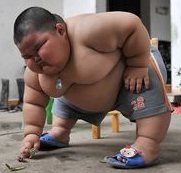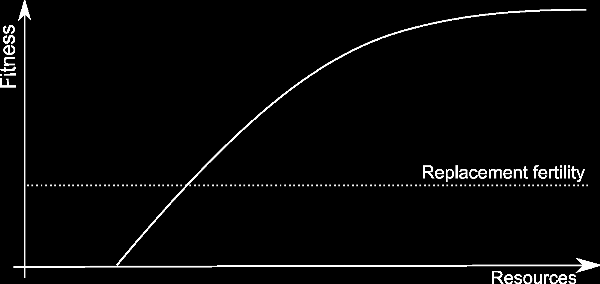 Resource allocation is best known as a key issue in project management. However, it is quite a general topic - perhaps best seen as being part of systems theory or cybernetics.
Resource allocation is best known as a key issue in project management. However, it is quite a general topic - perhaps best seen as being part of systems theory or cybernetics.This article goes over some basics of how resource allocation theory applies to organic organisms - and then compares this with the situation in cultural realm.
 Organisms can covert resources into fitness. However they face limits when doing so: too few resources and they can't even live, let alone reproduce; too many resources and the organism can't utilize them fast enough. This situation is illustrated on graph to the right:
Organisms can covert resources into fitness. However they face limits when doing so: too few resources and they can't even live, let alone reproduce; too many resources and the organism can't utilize them fast enough. This situation is illustrated on graph to the right:
The exact shape of this curve is species-specific - some species are better able to take advantage of resources surpluses than others. In particular, r-selected species typically go in for resource storage much less than K-selected ones do.
Environmental resources are not necessarily constantly available. Fluctuations in resource availability result in the need for resource storage. Organisms often need to divide their resources between ones used now and ones saved for later. Sometimes more resources are available than can be utilized at once. At other times, a future resource shortage is anticipated - for example due to the impending arrival of winter. For examples of storing for scarcity:
- Cacti receive water infrequently - and must store it in order to survive when it is absent from their environment;
- Hibernating mammals store energy as fat and then burn through it in the winter.
In addition to adaptations associated with actually storing resources, there are also adaptations associated with when to store resources and when to spend them.
Thermostats make good examples of resource expenditure adaptations in the organic and cultural realms. There's a thermostat in your body - that keeps your temperature within a narrow range of values. There's another thermostat in your fridge - which does something very similar. Your building probably contains more thermostats that act to regulate the air temperature. In each case, the availability of resources is largely ignored by the thermostat.
Another important target of expenditure in both the organic and cultural realms is offspring. Surviving offspring are typically expensive - and often organisms only manage to produce one or two. This is an observation that applies broadly to organisms of many sizes - and to both the organic and cultural realms.










No comments:
Post a Comment